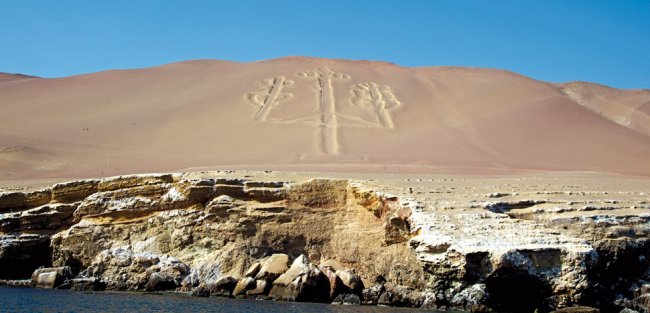Mystery Of The Candelabrum: One Of The Most Enigmatic Ancient Giant Ground Drawings In The World
Ellen Lloyd - AncientPage.com - A giant mysterious figure, world-renowned under the name "Candelabrum" can be seen from as far as 12 miles out to sea.
The Candelabra is 595 feet long and resembles a candlestick. The figure "is drawn" on a slope of the huge sandy mountain located opposite the island of Kangalyan in a bay Paracas, Peru.
Who made it and why? This is a question no one has been able to answer so far. Obviously, its creators believed it was important that the ground drawing must be clearly visible from the air.
Separated by 130 miles from the Nazca Plain, with its famed giant figures, the Candelabra apparently is not the work of the Nazca people.
It is puzzling why such a figure would be placed where it could be seen best by sailors. Candelabra's makers, purpose, and symbology are in doubt. The Pisco geoglyph really doesn't match the motifs in our books on South American archeology.
Some archeologists say it is only a trident, but whoever saw a trident like this?
Frank Joseph, the author of several alternative history books, like "Before Atlantis" and "Advanced Civilizations of Prehistoric America", thinks the Candelabrum looks like a Jimson weed! Furthermore, he states that there is a miniature version of the Candelabra drawn on a rock in California's Cleveland National Forest, and associates the two candelabras in this way: The ancient inhabitants of Peru voyaged to California to collect Jimson weed and other hallucinatory drugs. When they sailed back to Peru with their cargo, they used the Pisco geoglyph as a navigational aid!
That is one hypothesis, but there are also other ideas behind the purpose of creating the Candelabra.
In ancient times it was believed that "Candelabrum" was put on a mountain slope by the Spanish monk Ramon Rokhason sent to Peru. Making the pilgrimage from the city of Lima, he and his followers reached Parakas where they created the huge figure. Sometimes the figure was called "Three crosses," but contemporaries very seldom use this term.
There was a new version of the emergence of the mysterious "Candelabrum" of Parakas later. Some historians spoke about a figure as about "the Life Tree," serving as the cult image at the time of the most ancient civilizations, which inhabitants of lands of Pisko-Parakas worshipped. Then, there were several versions related to the sea.
Writer Eduardo Garcia Moreno in the book "Code of pirates" argued that ancient "Candelabrum" was left by the filibuster busy with plowing the seas and plundering the cities, and Paracas was the place where pirates could hide from prosecutions.
Some historians and seafarers believed that "Candelabrum" served as a reference point and a precautionary sign for the ships reaching the so-called zone of Bokeron, being considered dangerous because of the stormy sea.
Paracas's "candelabrum" is so large-scale phenomenon that it is hard to imagine a person capable to put such a huge image on a slope of the sandy mountain. Especially, when the mountain slope goes down to the water at an angle of approximately fifty degrees. Ditches of this mysterious image have depth in two meters and four-meter width.
The height of the central figure of "Candelabrum" makes more than a hundred meters.
Disputes on the emergence of the surprising "Candelabrum" continue among historians and archeologists of the world, but to solve this mystery has not been possible. Probably, Paracas's "Candelabrum" is simply a geometrical image of a trident or an important ritual sign of ancient civilizations.
In any case, this figure is a valuable cultural heritage.
No one knows for certain the age of the original carving. However, an expedition by the French writer Robert Charroux in 1969, noted that, although the mountainside was exposed to the wind, the wind contained no dust or sand. Charroux thus concluded that the trident carving could have been drawn millennia ago and yet still have avoided any significant erosion.
The trident symbol at Paracas is a major clue to its origin. According to local legend, this carved figure represents the god Viracocha's lightning rod, who was worshiped throughout South America.
Written by - Ellen Lloyd – AncientPages.com
Copyright © AncientPages.com All rights reserved. This material may not be published, broadcast, rewritten or redistributed in whole or part without the express written permission of AncientPages.com
More From Ancient Pages
-
 Examined Ancient Bone Suggests Santa Claus Was Real
Archaeology | Dec 8, 2017
Examined Ancient Bone Suggests Santa Claus Was Real
Archaeology | Dec 8, 2017 -
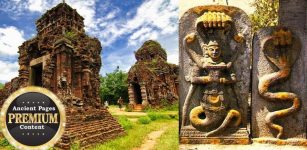 Champa’s Megalithic City My Son And The Nagas Inscription That Could Re-Write History
Ancient Mysteries | Jan 27, 2018
Champa’s Megalithic City My Son And The Nagas Inscription That Could Re-Write History
Ancient Mysteries | Jan 27, 2018 -
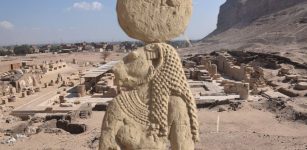 Is An Ancient Temple Dedicated To The Lioness Goddess Repit Hidden In The Cliffs Of Athribis?
Archaeology | Dec 10, 2024
Is An Ancient Temple Dedicated To The Lioness Goddess Repit Hidden In The Cliffs Of Athribis?
Archaeology | Dec 10, 2024 -
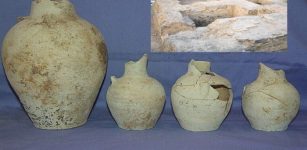 Stone Water Well Dated To Sassanid Era (224-651 CE) Unearthed In Isfahan Hills, Iran
Archaeology | Jun 26, 2020
Stone Water Well Dated To Sassanid Era (224-651 CE) Unearthed In Isfahan Hills, Iran
Archaeology | Jun 26, 2020 -
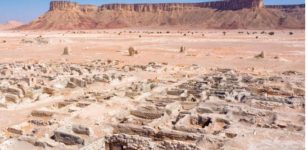 Unknown 8,000-Year-Old Human Settlement With A Rock-Cut Temple, Altar And Inscriptions Discovered In Al-Faw, Saudi Arabia
Archaeology | Aug 3, 2022
Unknown 8,000-Year-Old Human Settlement With A Rock-Cut Temple, Altar And Inscriptions Discovered In Al-Faw, Saudi Arabia
Archaeology | Aug 3, 2022 -
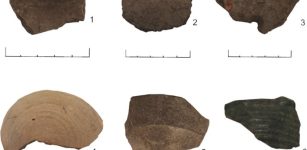 Earliest Evidence Of Wine Consumption In The Americas Found In Caribbean
Archaeology | May 23, 2023
Earliest Evidence Of Wine Consumption In The Americas Found In Caribbean
Archaeology | May 23, 2023 -
 Amaru (Katari) – Powerful Inca God Who Controlled Weather Phenomena
Featured Stories | Apr 9, 2024
Amaru (Katari) – Powerful Inca God Who Controlled Weather Phenomena
Featured Stories | Apr 9, 2024 -
 Did Ancient Seafarers In Southeast Asia Build Sophisticated Boats As Far Back As 40,000 Years Ago?
Archaeology | Feb 24, 2025
Did Ancient Seafarers In Southeast Asia Build Sophisticated Boats As Far Back As 40,000 Years Ago?
Archaeology | Feb 24, 2025 -
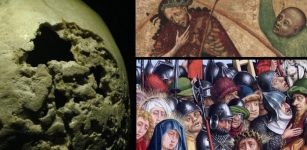 Manuscripts And Art Support Evidence That Syphilis Was In Europe Long Before Explorers Could Have Brought It Home
Featured Stories | Jul 15, 2022
Manuscripts And Art Support Evidence That Syphilis Was In Europe Long Before Explorers Could Have Brought It Home
Featured Stories | Jul 15, 2022 -
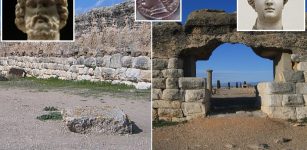 Ancient City Empuries (Emporiae) With Best Greek Ruins Located Outside Of Greece
Featured Stories | Dec 29, 2022
Ancient City Empuries (Emporiae) With Best Greek Ruins Located Outside Of Greece
Featured Stories | Dec 29, 2022 -
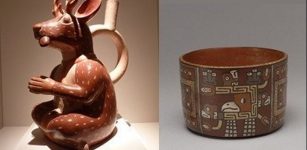 Genes And Languages: Development Of Pre-Incan Culture In Central Andes
News | Oct 26, 2020
Genes And Languages: Development Of Pre-Incan Culture In Central Andes
News | Oct 26, 2020 -
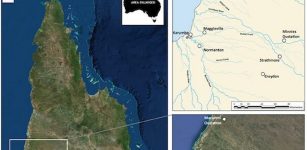 Isotope Analysis Helps Tell The Stories Of Aboriginal People Living Under Early Colonial Expansion
Archaeology | May 2, 2023
Isotope Analysis Helps Tell The Stories Of Aboriginal People Living Under Early Colonial Expansion
Archaeology | May 2, 2023 -
 A 200-Year-Old Swedish Mystery Remains Unsolved
Ancient Mysteries | Oct 7, 2015
A 200-Year-Old Swedish Mystery Remains Unsolved
Ancient Mysteries | Oct 7, 2015 -
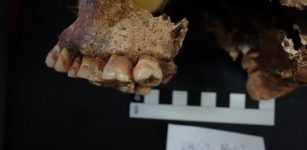 Milk Enabled Massive Steppe Migration
Archaeology | Sep 15, 2021
Milk Enabled Massive Steppe Migration
Archaeology | Sep 15, 2021 -
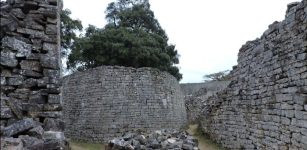 Great Ruins of Zimbabwe: Unsolved Secrets Of Bizarre Buildings Without Windows And Doors
Civilizations | Jun 24, 2015
Great Ruins of Zimbabwe: Unsolved Secrets Of Bizarre Buildings Without Windows And Doors
Civilizations | Jun 24, 2015 -
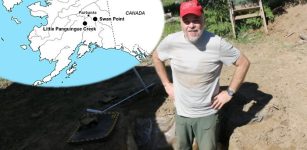 Tanana Valley, Alaska: Study On Ancient Hunter-Gatherer Sites Dating Back To 14,500 Years Ago
Archaeology | Mar 21, 2022
Tanana Valley, Alaska: Study On Ancient Hunter-Gatherer Sites Dating Back To 14,500 Years Ago
Archaeology | Mar 21, 2022 -
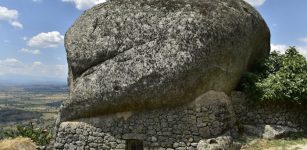 Ancient Village Of Monsanto, Miraculously Balanced Giant Boulders And Knights Templar Connection
Civilizations | Dec 20, 2018
Ancient Village Of Monsanto, Miraculously Balanced Giant Boulders And Knights Templar Connection
Civilizations | Dec 20, 2018 -
 On This Day In History: ‘Earl of Northumberland’ Thomas Percy Executed Because He Was Catholic – On August 22, 1572
News | Aug 22, 2016
On This Day In History: ‘Earl of Northumberland’ Thomas Percy Executed Because He Was Catholic – On August 22, 1572
News | Aug 22, 2016 -
 Human Migration Out Of Africa To Middle East Through Corridors Provided By Monsoons
Archaeology | Nov 27, 2019
Human Migration Out Of Africa To Middle East Through Corridors Provided By Monsoons
Archaeology | Nov 27, 2019 -
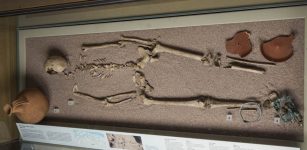 London Was Always A Multicultural City, DNA Research Confirms
Archaeology | Nov 26, 2015
London Was Always A Multicultural City, DNA Research Confirms
Archaeology | Nov 26, 2015

